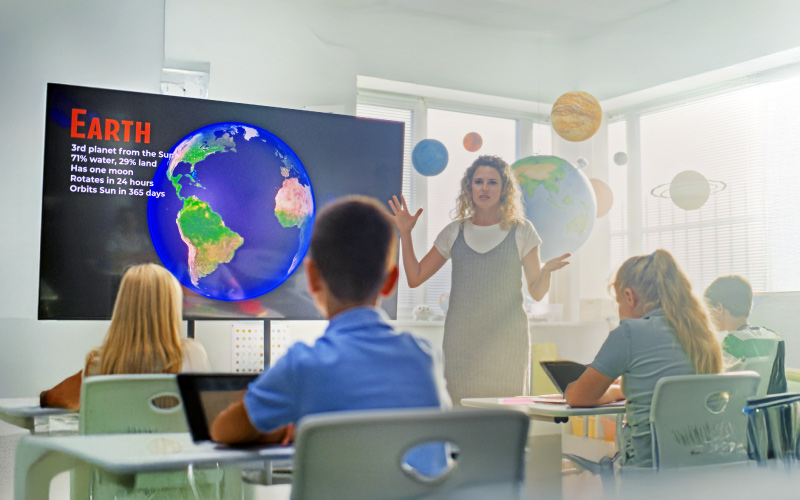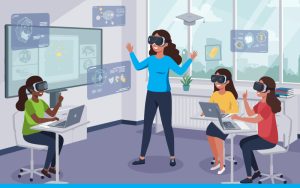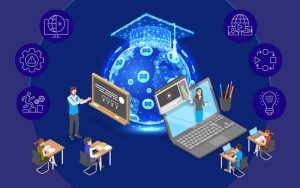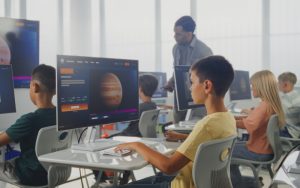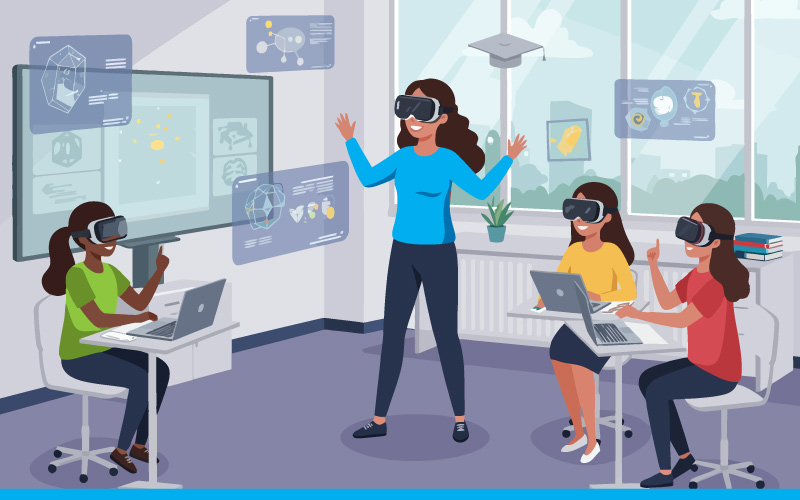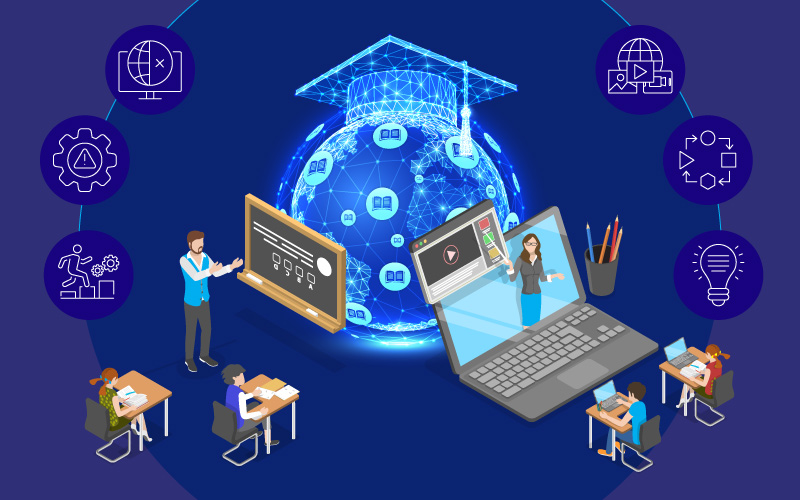Accessible STEM education is at the intersection of equity, technology, and educational innovation. Although progress has been made, there are still many resources lacking explicit frameworks, toolkits, or quantifiable impacts. This blog will give new, sustainable, evidence- and research-grounded approaches for educators and education technologists to use. As STEM programs are in high demand worldwide, it is necessary that all the students get access to quality education, including girls and students with special needs. For example, students with disabilities are often denied access to valuable academic and career opportunities because they can’t access the course materials. By pushing through the obstacles to inclusion, teachers and education content producers can create a future where diversity produces innovative results, not disparity.
Let’s dive into the blog to understand more.

Understanding the Barriers in STEM for Students with Special Needs
STEM tends to be complex and relies on abstract thought, visualization, and hands-on investigation aspects that can mistakenly leave out students with disabilities.
1. Complex STEM Subjects
For visual learners, learning is easy with diagrams, but students with visual differences will see these visuals differently. Lab explorations that include physical manipulation or auditory components can be even more challenging for students that are mobility impaired as well as non-functional hearers. Cognitive disabilities can also problematize learning, especially when tasks use multi-step problem-solving with abstract reasoning.
2. Limited Accessibility
In STEM, material and content frequently aren’t presented in forms available to students with disabilities. Braille copies, tactile learning materials, and scientific terminology glossaries in sign language exclude or have insufficient development, considerably reducing the possibility of equal access.
3. Gaps in Technology and Infrastructure
As the scope of digital learning is expanding, most digital platforms aren’t built with accessibility as very few have features for screen readers, adjustable font sizes, or adjustable color contrast options. Even with assistive technologies, students with disabilities face additional barriers to access digital content.
4. Social and Institutional Issues
Apart from content issues, there are systemic issues to contend with. Curriculums often do not include equitable representation, and teachers often lack training in adaptive delivery of curricular content. Additionally, school infrastructure frequently overlooks universal design principles, widening the gap between general and special education.

Principles To Develop Accessible E-learning Content in STEM
Teachers who aspire to create STEM content that is inclusive for all students including those with disabilities, should start with a platform consisting of Universal Design for Learning (UDL).
1. Universal Design for Learning (UDL): UDL is a model for supporting multiple pathways to learning, which includes multiple routes to access information, interact with materials, and to convey understanding. For the STEM disciplines, this means both the design and delivery of digital learning objects.
2. Multiple Presentation Means: Presenting the same information in visual, auditory, and tactile form will make it more accessible. To give a specific illustration, the visual student will get the information from viewing a graph and the visually impaired student may have to receive the information orally or tactually, perhaps via a raised-line model.
3. Organization and Consistency: For students with special needs, organized and understandable content is better. A neat arrangement with rational hierarchies, clear headings, and consistent placement of elements will facilitate comprehension by reducing cognitive load.
4. Scaffolding and Chunking Content: STEM subjects are complicated. The ability to break a lesson into smaller, structured parts enables the student who may have problems with attention or processing in order to access the content of a lesson at a manageable pace. Each piece of content must be built on the previous component and must include visual reminders and step-by-step instruction.

Practical Strategies for Creating Accessible STEM Content
Designing accessibility content is not just about compliance, but also about making enhancements to learner experience.
1. Multisensory Learning Methods
-
Visual Aids: Whenever possible, make use of graphs and diagrams. Make sure that all visuals are either descriptive or have an “alt-text”.
-
Interactive Simulations: Allow learners to manipulate a scientific phenomenon without an actual hands-on experience. For example, a 3D-printed molecule facilitates connections from theory to practice.
-
Captioned, and Described Media: All videos should include captions and audio descriptions to support a student with hearing impairment and/or visual impairment.
2. Integration of Technology Integration
Screen Readers & Braille Displays: Make sure your content functions properly with screen readers like JAWS, or NVDA.
Voice Recognition and Dictation: Mobility impaired students can use voice recognition software to access the content, and/or verbally answer an assessment using dictation software.
Specialized Equipment: EquatIO enables students to enter advanced math symbols through voice recognition or keyboard, and available graphing calculators give audio, and/or haptic feedback.
3. Differentiated Instruction and Assessment
-
Adaptive Pathways: Allow students to learn independently, repeating or going back to lessons as necessary.
-
Flexible Assessment: Provide open-ended assessment formats, such as oral exams, project-based works, or even digital narratives, so students are able to show their grasp of ideas or as acquired and conveyed in a manner accommodating to their needs.
-
Feedback Loops: Allow individual feedback for student learning that can be provided through audio, text, or visual.
4. Accessible STEM Resources and Platforms
Select platforms that meet WCAG 2.1 standards and offer:
- Text-to-speech features
- Customizable fonts and contrast
- Keyboard-only navigation
- Closed captions and transcripts

Overcoming Institutional and Cultural Shifts Challenges
Content design is only one part of the puzzle. For true inclusion, support systems in important:
1. Teacher Development and Training
Educators should be trained to be inclusive and recognize the needs of learners. Teacher training should focus on inclusive teaching approaches, using/media accessible content and use of assistive technologies.
2. Policy and Funding
Systems of sustainable support for inclusion backed by policy and funding are crucial. As a priority external investment is needed for:
- Reducing class size
- Workplace support for students with disabilities
- Purchase and upkeep of assistive technology
- Ongoing professional learning of teachers
3. Peer Support and Collaboration
The culture of inclusion starts in the classroom. Learning is a collaborative process, and inclusion begins when students are collaborating and working together on projects. When Peers work together and cooperate, stigma are reduced, and empathy develops.

Conclusion
The purpose of STEM learning can only be full field when it is designed for all learners. As digital educators, and leaders in schools and other educational institutions, we have both the responsibility and the opportunity to eliminate barriers for participation of students with special needs. Simply using universal design, introducing assistive technology, and creating inclusive pedagogy empowers people to participate.
Inclusive STEM education is not a matter of lowering standards or expectations but of removing unnecessary barriers to potential. Treat accessibility as an up-front, everyday content-creation practice. Regularly test your materials with real users. Stay current with changing standards. And most importantly, work together with disability advocates, technologists, and educators to create inclusive and accessible STEM learning.
If you need any help in creating STEM e-learning content for students with special needs, connect with Mitr Media team.
FAQ's
Why is accessibility essential to STEM education for students with special needs?
Accessibility to STEM eLearning means that all students (of both genders and with special needs) get to be partakers of learning programs. It's a step towards eliminating educational inequalities and fostering multiverse innovation.
In STEM education, what are some common problems encountered by students with special needs?
Some common issues are course format that is not complex, non-adapted labs and visuals, insufficient assistive technologies, and no customized learning resources. Besides this, systemic issues such as learning materials that are not inclusive, and teachers who are not trained.
How can accessibility be improved in STEM eLearning through Universal Design for Learning (UDL)?
Through flexible teaching and assessment methods, UDL improves accessibility in STEM content. Also, UDL allows learners to access and engage content in multiple ways and demonstrate understanding of content.
What are effective multisensory learning strategies for accessible STEM education?
Examples of multisensory learning strategies in accessible STEM include when students use graphs with alt-text, auditory descriptions of course materials, tactile models for visual learners through touch, captioned videos for auditory learners, and interactive simulations to allow boys and girls choice in how they have access to physical, visual, auditory, video and written content representation.
Identify the assistive technologies required for providing accessible STEM material?
In order to provide access to STEM material, technologies like screen readers, specially designed input app for mathematics, braille displays, accessible graphing calculators are required.
How can STEM educators approach designing assessments for students with special needs?
To create content for students with special needs, tactics such as creating adaptive learning pathways in more than one format, oral and project assessments and multiway feedback will prove to be beneficial.
What is the role of schools and policymakers in supporting accessible STEM education?
Educational institutions should focus on educating trainers and support staff, also they can invest in assistive technology, and work towards curricular policies.
Can you share examples of successful accessible STEM education initiatives?
Initiatives like PhET Interactive Simulations, Khan Academy accessible learning resources, Labster virtual laboratory simulations, and Girls Who Code’s outreach are examples of effective practice.
How can Mitr Media assist in creating accessible STEM educational content?
Mitr Media is focused on designing and building inclusive e-learning platforms and multimedia materials with accessibility standards in mind so that STEM material is usable by all learners at different levels of need.
What value does partner with Mitr Media bring to institutions aiming for inclusive STEM education?
Mitr Media has expertise in implementing assistive technology, enacting Universal Design for Learning, and providing ongoing support to transformation organizations, enabling their STEM curriculum into an accessible and interesting learning experience.


